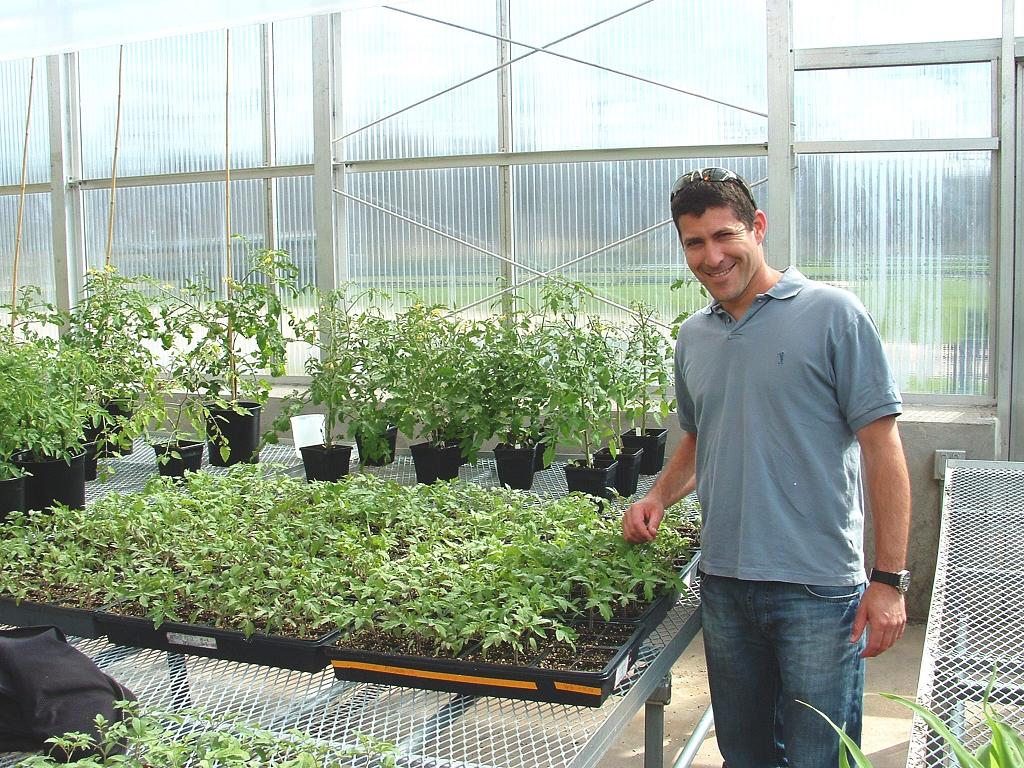The authors of the study discovered that a single gene, essential for the formation of an inflorescence in the tomato plant, increases the yield of the plant by more than 60%.

Tomato is among the most popular vegetables in the Mediterranean menu and a natural product in every salad. Therefore, it is not surprising that every year tens of millions of tons of tomatoes of various types are grown in the world, which are estimated to be worth more than two billion dollars. Now, a new development by scientists from the Hebrew University's Robert H. Smith Faculty of Agriculture, Food and Environment will contribute to increasing the yield of large tomatoes while improving their sweetness.
The authors of the study, PhD student Uri Krieger and Prof. Danny Zamir from the Robert H. Smith Faculty of Agriculture at the Hebrew University, in collaboration with Dr. Zach Lipman from Cold Spring Harbor Laboratories in New York, discovered that a single gene, essential for creating an inflorescence in the tomato plant, increases the yield The plant by more than 60%. The researchers also discovered that this feature can be applied in a variety of varieties and in different climate conditions.
The gene was identified during a genetic study, the results of which were published earlier this month in the journal Nature Genetics, which focused on deciphering the genetic factors involved in the hybrid vigor phenomenon in the tomato plant. In this phenomenon, which was identified more than a century ago by Charles Darwin, the offspring of two genetically related plants shows a better growth rate and yield than its parents. One of the first theories proposed about a century ago attributes the phenomenon to a unique interaction that occurs between two different copies of a certain gene, but until now no genes involved in the phenomenon have been identified.
To locate the gene, the researchers used a genetic database containing about 5,000 mutant tomato lines. Each of the lines contains on average a single defective gene but is otherwise identical in its genetic makeup to the tomato cultivar. The mutant lines differ in traits related to plant development such as fruit shape, leaf shape, fruit color, etc. The researchers crossed the cultured strain with different mutant lines and compared the yield of the clones and other traits to the cultured strain. "We planted the experiment in two different growing areas and tested whether the enclosures, which contain one normal copy of a certain gene and another copy with a mutation, can improve various properties in the plant compared to the cultivated variety," explains Krieger. The characterization of the plants is done on a variety of features such as: the fruit yield per plant, the weight of the plant, the size of the fruit and the percentage of soluble sugars in it. "When we got to the field to see how the plants developed, we easily identified the plant that gave the greatest yield because it simply could not be picked up by hand."
The researchers found that the breeding with the mutation results in an increase in the overall number of inflorescences in the plant and the number of flowers in each inflorescence which will later develop into fruits. Thus, while in the cultivated variety about 75 inflorescences are formed and in each inflorescence between 3-5 tomatoes, in the inbred line about 100 inflorescences are formed with 4-7 tomatoes in each inflorescence. Moreover, contrary to the assumption that multiplying tomatoes in a plant will result in a decrease in the weight of each fruit, the average weight of the fruits in the inbred line was higher than that of the cultivated variety.
The gene found brings another unique feature in the tomato - a sweeter taste. "The tomato bush can produce a limited level of sugars which it divides equally between its fruits" says Krieger. "Therefore, we first thought that the large crop we received would harm the sweetness of the fruit." However, to the researchers' surprise, the gene they found caused a 20% increase in the level of soluble sugar in the fruit, a fact that is particularly relevant to ketchup manufacturers.
According to Krieger, "In terms of research, our finding is the first proof of the existence of a single gene that dramatically affects the on-hybrid phenomenon. In the applied aspect, the study showed that the integration of the gene into the plant can lead to the improvement of several traits of agricultural importance, and all this without the use of genetic engineering."
The technology was registered as a patent by Application, the research development company of the Hebrew University, which is looking for potential partners for the development and commercialization of the invention.
